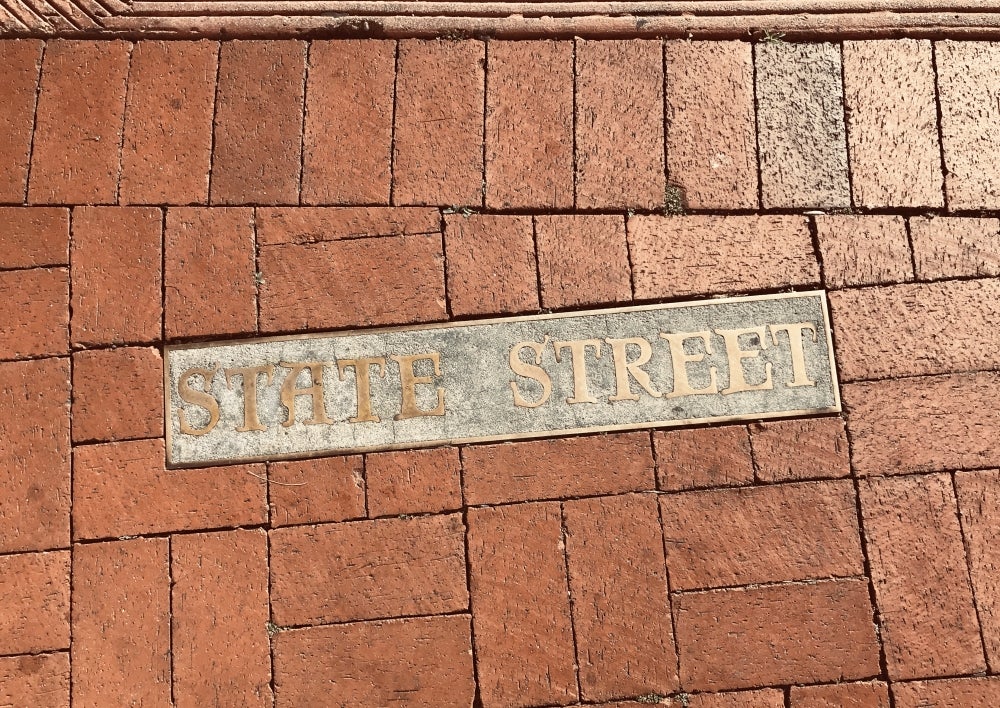
Normal, Sort of
Fourteen months into the COVID pandemic it seems like we’re over the worst of it: shops and restaurants are back in the swing of things, mask mandates have been lifted and we’re getting out there again.
But does this activity signal a return to normalcy?
This was the first question UC Santa Barbara economics professor Peter Rupert sought to answer at the UCSB Economic Forecast Project’s 2022 South County Economic Summit, the first in-person edition of the annual presentation in two years. Local business and municipal leaders were among those who gathered once again at the Granada Theater to get a sense of the state of the local economy.
Rupert was joined by Village Properties residential realtor David Kim, Gene Deering from Radius Commercial Real Estate and Josh Williams from BW Research. UC Office of the President Chief Investment Officer and Vice President of Investments Jagdeep Singh Bachher rounded out the talks with a conversation about investing in turbulent times.
“The question is, are we back to where we were, pre-pandemic,” Rupert said.
The answer? Somewhat, at least physically. Cellphone tracking data indicates that some places, like hotels and the local airport, have bounced back, in terms of foot traffic. Restaurants and supermarkets, not quite.
While retail and hospitality warm back up, the residential real estate sector continues to soar. Having taken the same dive every other sector did in the early days of the quarantines, the trend quickly reversed itself as homes became hot commodities for people taking advantage of the remote working lifestyle, and for families from Los Angeles and other urban centers looking to trade city life for a small-town scene.
“We’re in a seller’s market,” said Kim. “Prices are up. There’s no inventory.” The combination of low inventory and high demand drives up the amount prospective buyers are willing to pay, as they vie for a dwindling number of homes, he explained. The competition between buyers is so intense that even prospective sellers might opt to stay put rather than sell their homes and join the fray, further clamping down on supply. According to Kim, roughly 50% of homebuyers in the South County these days are from out of town.
“Pre-pandemic, the median sales price for homes was $1,290,000,” Kim said. “And where are we at now, in 2022? The median sales price is $2,251,000.” Heading into the near future, he said, the local residential real estate market is bound to be affected by the limited number of homes for sale, supply chain issues, high costs of building material, worker shortages and a potential recession.
Commercial real estate in South County, meanwhile, is executing some fancy footwork, and nowhere is that more apparent than on State Street. Before the pandemic it was a road open all the way to Cabrillo Boulevard, but COVID-related social distancing and indoor occupancy rules led to the closure of nine blocks to allow restaurants outdoor space to serve patrons. Today, plans are under consideration to turn that makeshift setup into a permanent thing.
“If State Street is going to remain closed, we need to repurpose that street and we need to do it in a way that happens quickly,” said Deering, who presented a visual tour of commercial real estate in South County.
It’s not just the State Street Promenade; commercial properties all along the thoroughfare from Upper State through downtown are making changes. The former Nordstrom and Macy’s buildings are undergoing transformations from department store to other uses, including office space, as is the former Enterprise Fish Co. building on lower State Street. The move toward office space could revitalize commerce on State, which was struggling with flagging business and double-digit vacancy rates since well before the pandemic.
“Hopefully, that will encourage those tech tenants to come down,” Deering said. Other big shifts in local commercial real estate are with hotels that are changing hands – there have been nine hotel sales in the last 18 months — and apartments being planned for the former Staples building on the 400 block of State. The Sears parcel at La Cumbre Plaza on Upper State could become residential as well, he said.
The job market was also a hot topic at the summit, as presenters considered who is working and who isn’t.
“If you just look at the employment rate … it looks like the labor market’s fantastic, but there are many puzzling things going on,” Rupert said. The number of jobs slightly outpaced the number of unemployed people before the pandemic, a trend that was squashed when nationwide stay-at-home orders interrupted business operations, causing massive job loss. Unemployment has fallen and the number of job openings has since increased, with an even wider gap between unemployed people and available jobs now than before COVID.
“We have more job openings than in the history of this data, and it’s much, much higher than the number of unemployed people,” Rupert said. “So there are lots of jobs available out there, but for some reason, people aren’t taking them.”
Clues to this puzzle might be found in the labor force participation rate — an estimate of how many adults are able and willing to work at current wages. In general, the LFPR has been declining since 1949. It dropped steeply in 2020 and has since bounced back, but not to 2019 levels.
The Great Resignation isn’t to blame, said Josh Williams.
“There’s a narrative going around that young people are dropping out of the workforce, and that’s the problem,” he said. “It’s not really true.” The labor force participation rate for 18- to 24-year-olds, he said, has recovered to about the same place it was before the pandemic.
“What you’re seeing now is those people know they have market power, and so they’re not taking that job that’s paying minimum wage,” he said. “They’re not taking jobs where they feel like they don’t have a future.” He also attributed the lower LFPR to longer-term trends in demography, educational attainment, work culture and automation.
In Santa Barbara, meanwhile, trends affecting the resilience of the workforce include an aging population, rising rent, housing and childcare costs. According to Williams, the labor market will continue to be tight as workers return. Some will relocate, in search of more affordable housing and more opportunity.
“Businesses do expect to grow over the next 12 months,” he said, adding that they will likely face some challenges in finding workers. The workforce could be strengthened, he suggested, by educating workers on higher-paying career pathways, helping them find childcare, expanding quality access to the internet, increasing educational attainment among the county’s least educated adult residents and supporting expanded housing options in work centers and transit hubs.



